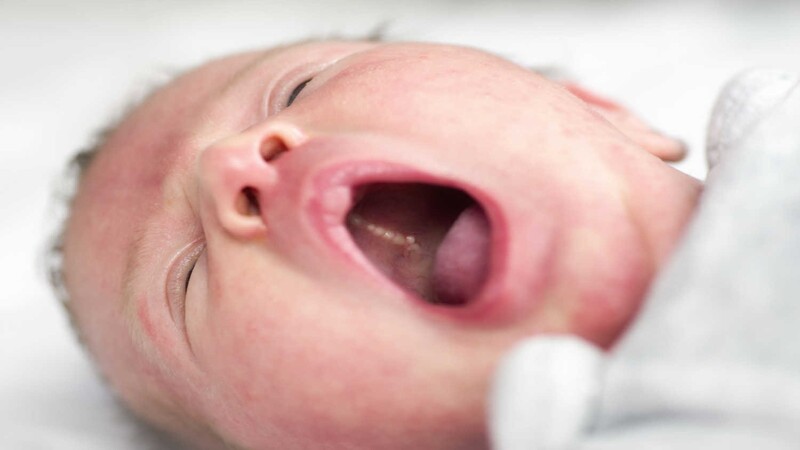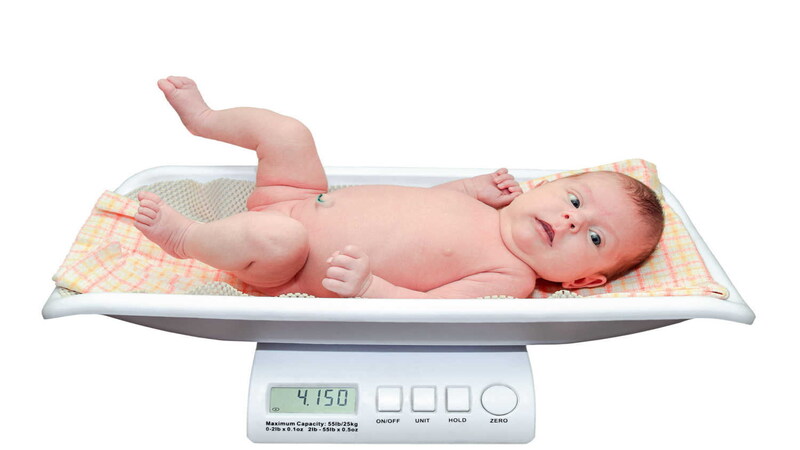
Teething in babies is a significant milestone for mothers, as it indicates that the baby will soon start eating solid foods in addition to breast milk. Newborns do not have teeth when they are born. This is a normal part of their development. As they grow, their teeth will start to come in. Teething typically occurs between 4 and 7 months of age (1). However, newborns can sometimes have Epstein pearls. Epstein pearls in newborns are small cysts that resemble teeth and can occur in the upper gum or mouth.
It’s essential to differentiate Epstein pearls from more serious conditions, such as oral thrush or hand-foot-and-mouth disease, which may appear similar. Understanding the causes and symptoms of Epstein pearls will help you identify them and distinguish them from other oral issues in babies. In this article, we discuss Epstein pearls in newborns in detail, including their identification and significance.
What Are Epstein Pearls in Newborns?
Epstein pearls are small white or yellowish bumps that commonly appear on the roof of a baby’s mouth. The first recorded case of Epstein pearls dates back to the 1880s, and nearly 85% of newborns are born with them (2). These pearls are named after Alois Epstein, a Czech pediatrician who was the first to describe this type of cyst in detail
Epstein pearls, also known as gingival cysts, palatal cysts, or dental lamina cysts, are typically harmless and do not pose a risk to your baby’s health.

Epstein pearls typically occur in babies during the latter stages of development in the womb. This condition arises when epithelial cells become trapped during the formation of the palate.
To put it simply, Epstein pearls develop when skin gets caught between the jaw and the palate during the formation of the mouth structure. These trapped cells then fill with a skin protein called keratin, resulting in mucosal cysts. Since this process occurs during fetal development, there are no preventive measures that can be taken.
It’s important to note that accidents, medical conditions, or the mother’s eating habits do not cause Epstein pearls in the baby. However, studies suggest that the likelihood of developing Epstein pearls increases if the baby is delivered past its due date, is overweight at birth, or if the mother is older in her pregnancy.
[Read: What Is Fetal Macrosomia And Its Symptoms?]
Signs and Symptoms of Epstein Pearls in Newborn Babies

Epstein pearls are more common in cases like,
- The baby is born past the due date
- Late pregnancy
- Multiple gestations
- The baby is overweight at birth
So, if any of these conditions happen during your pregnancy, then the risk of Epstein pearls increases.
There is no symptom of Epstein pearls other than their unusual appearance on a newborn baby’s gums. The signs of Epstein pearls are also pretty common in all babies. These are,
- The appearance of tiny white or yellowish nodules on the gums
- Cysts with a size between 1 and 3 millimeters on the gums
- Cysts that occur mostly on the upper gum of the oral cavity, which resemble a tooth
- A cluster of tiny bumps (2 to 6), or a single bump on the gums
- The disappearance of the bumps within a few weeks as the baby starts sucking the nipple or the pacifier
Epstein pearls do not cause fever, pain, or gum swelling in your baby, as teething does.
[Read: Overdue Pregnancy]
How Are Epstein Pearls in Newborns Diagnosed?
You can diagnose Epstein pearls at home simply by observing the size or pattern of the cyst.
But to ensure it is truly Epstein pearls and not any other similar-looking condition like Milia, dental lamina, Bohn nodules, or oral thrush, you can take your baby to the pediatrician.
The pediatrician will do an oral physical examination to understand the reasons behind the growths or nodules.
Treatment Options Available For Epstein Pearls
Epstein pearls typically do not require treatment and usually dissolve over time. The friction from breastfeeding, bottle-feeding, or chewing on pacifiers helps break down the cysts effectively.
- Often, the cysts gradually sink instead of rupturing. Therefore, Epstein pearls usually dissolve on their own without any help.
- Do not try to squeeze or pop out the cyst using your fingers or any instrument.
- In order to prevent gum infection, you should also make sure your infant is not picking at the Epstein pearls. (3)
- Maintain proper hygiene, like washing your nipples before breastfeeding or boiling the feeding bottle from time to time, to ensure no infection occurs in the Epstein pearls.
- You can provide pacifiers and soft teething toys to your baby to encourage fast chewing and thus the dissolving of Epstein pearls.
[Read: Pacifiers—The Basics]
When Should You Consider Seeing a Doctor?

You should consider making a doctor’s appointment if you find problems like
- The Epstein pearls are not cured even after several weeks
- The size of Epstein pearls does not reduce gradually over time
- The cysts are bleeding
- The cysts are getting bigger
- Your baby is crying out in pain while you feed
- Maintaining proper oral hygiene can help prevent fungal infections in Epstein pearls. You should speak with your pediatrician for more advice.
Epstein pearls in babies are a normal condition and nothing to worry about. These cysts will go away on their own, so you don’t have to be panic. However, it’s essential to maintain good hygiene in the area to prevent any infections. Please refrain from trying to pinch or pop the Epstein pearls, as this could be painful and harmful to your baby.
Regularly monitor the condition of your baby’s Epstein pearls and notify the pediatrician if there is any change in their size or shape. It’s important to have the Epstein pearls examined by a doctor to rule out other similar-looking conditions, such as oral thrush, milia, dental lamina cysts, or Bohn nodules.
FAQ’s
1. At What Age Can Babies Get Epstein Pearls?
Infants can develop Epstein pearls in the first few weeks or months after birth. Epstein pearls occur when small bits of skin become trapped while the jaw and palate are forming during the final stages of mouth development. These pearls usually appear within six weeks after a baby’s birth. It typically dissolves within a few weeks to two months.
2. Can Teething Cause Epstein Pearls?
Teething does not cause Epstein pearls; these are two separate issues that can sometimes be confused with one another. Natal teeth are occasionally mistaken for Epstein pearls, but cases of natal teeth are very rare. In contrast, Epstein pearls are quite common among newborns.
3. Do Epstein Pearls Go Away on Their Own?
Yes, in most cases, Epstein pearls dissolve on their own. The friction from breastfeeding or bottle-feeding is usually sufficient to break down the keratin inside the Epstein pearls. You can also help dissolve them by giving your baby a BPA-free soft silicone teether or pacifier.
4. Can Formula-Fed Babies Get Epstein Pearls?
Yes, both formula-fed and breastfed babies can develop Epstein pearls. The type of milk—whether formula or breast milk—does not cause Epstein pearls. These pearls occur during fetal development, and there is nothing that can be done to prevent this condition.
Read Also: Teething in Babies – Signs and Tips to Take Care of Baby’s Teeth
Reference
- American Academy of Pediatrics, Adapted from Caring for Your Baby and Young Child: Birth to Age Five 7th edition – https://www.healthychildren.org/English/ages-stages/baby/teething-tooth-care/Pages/Teething-4-to-7-Months.aspx
- Laura E. Diaz de Ortiz; Magda D. Mendez ; Lincoln Hospital, Lincoln Medical Center/Weil Cornell – https://www.ncbi.nlm.nih.gov/books/NBK493177/
- Medically Reviewed, Cleveland Clinic – https://my.clevelandclinic.org/health/diseases/epstein-pearls
